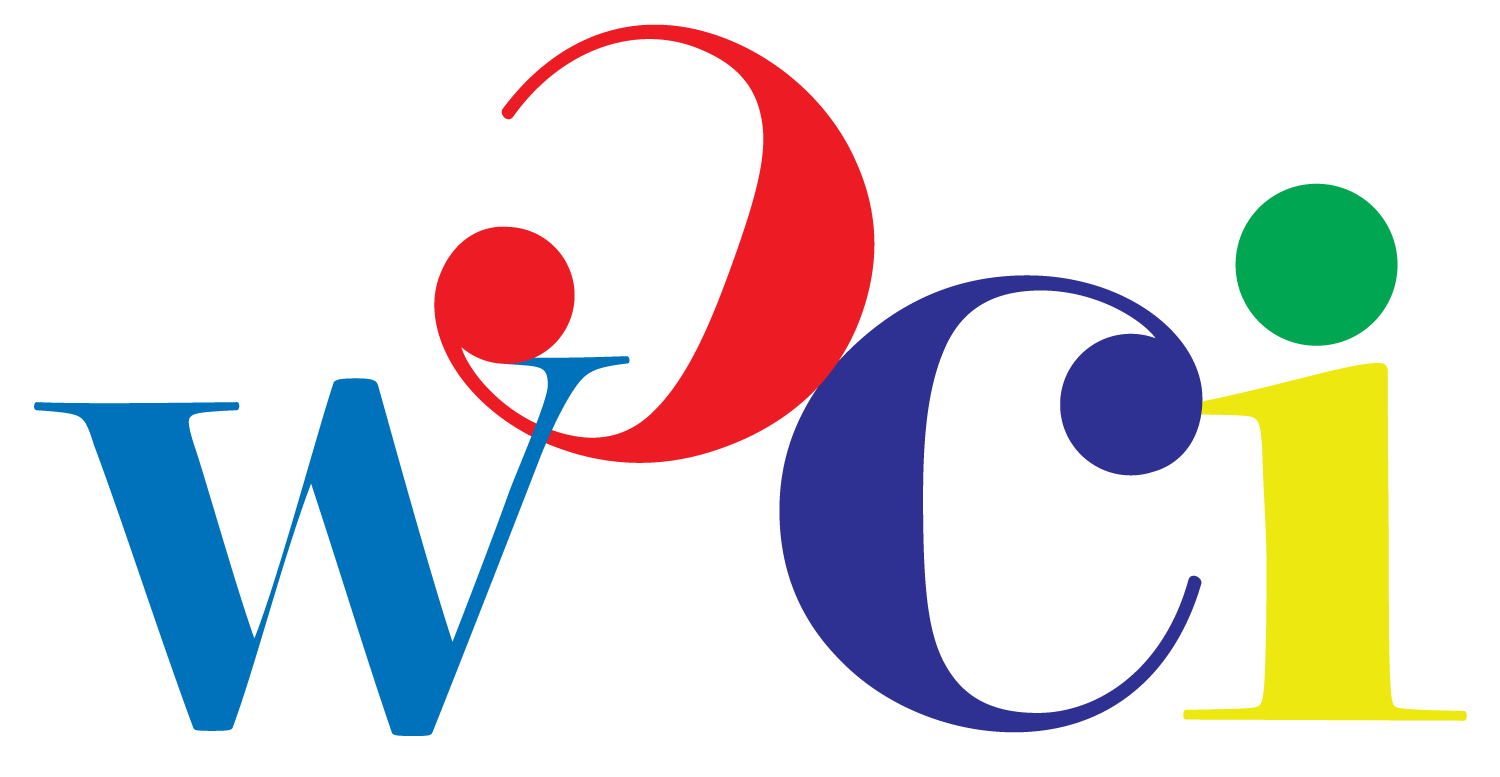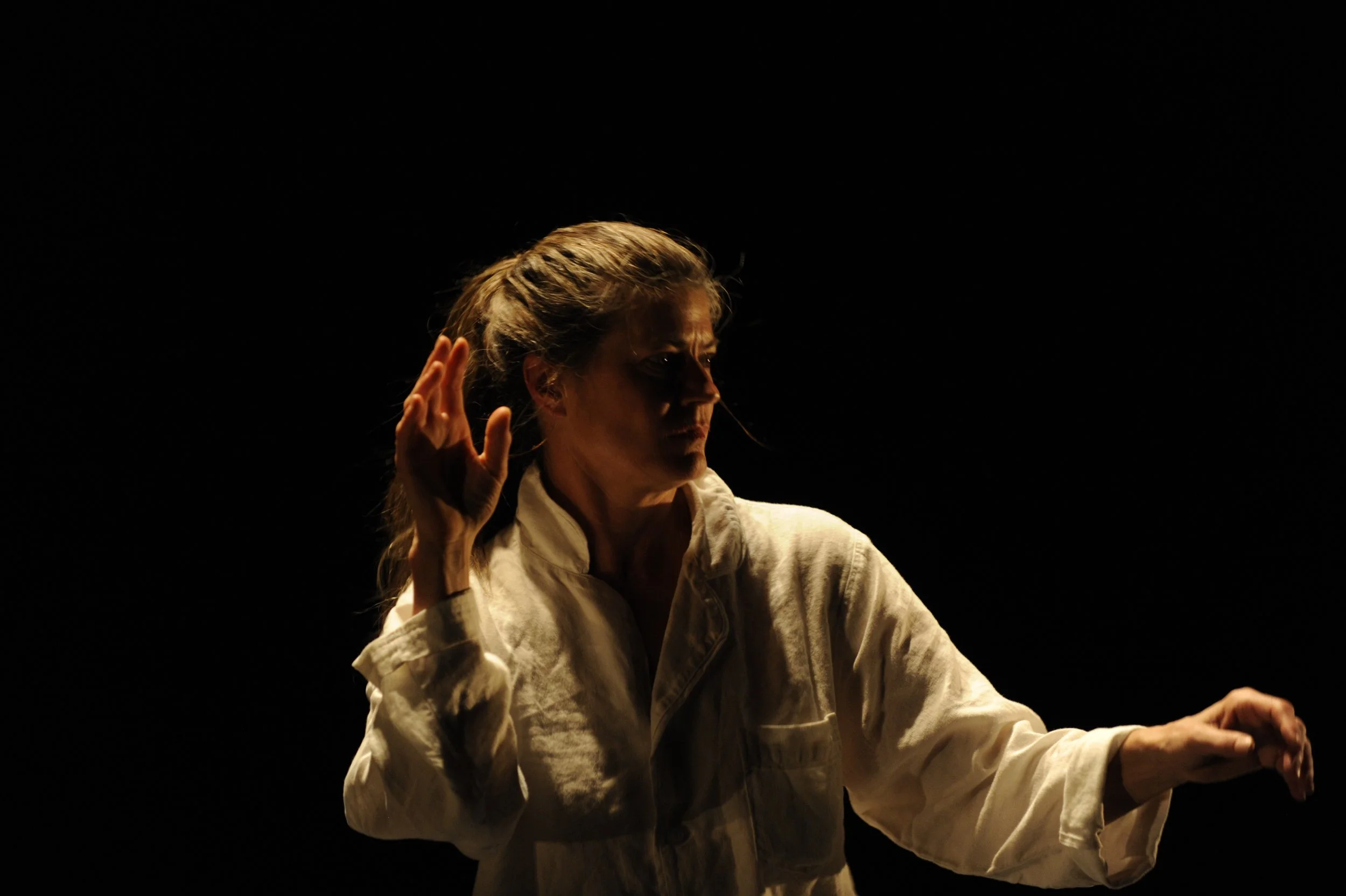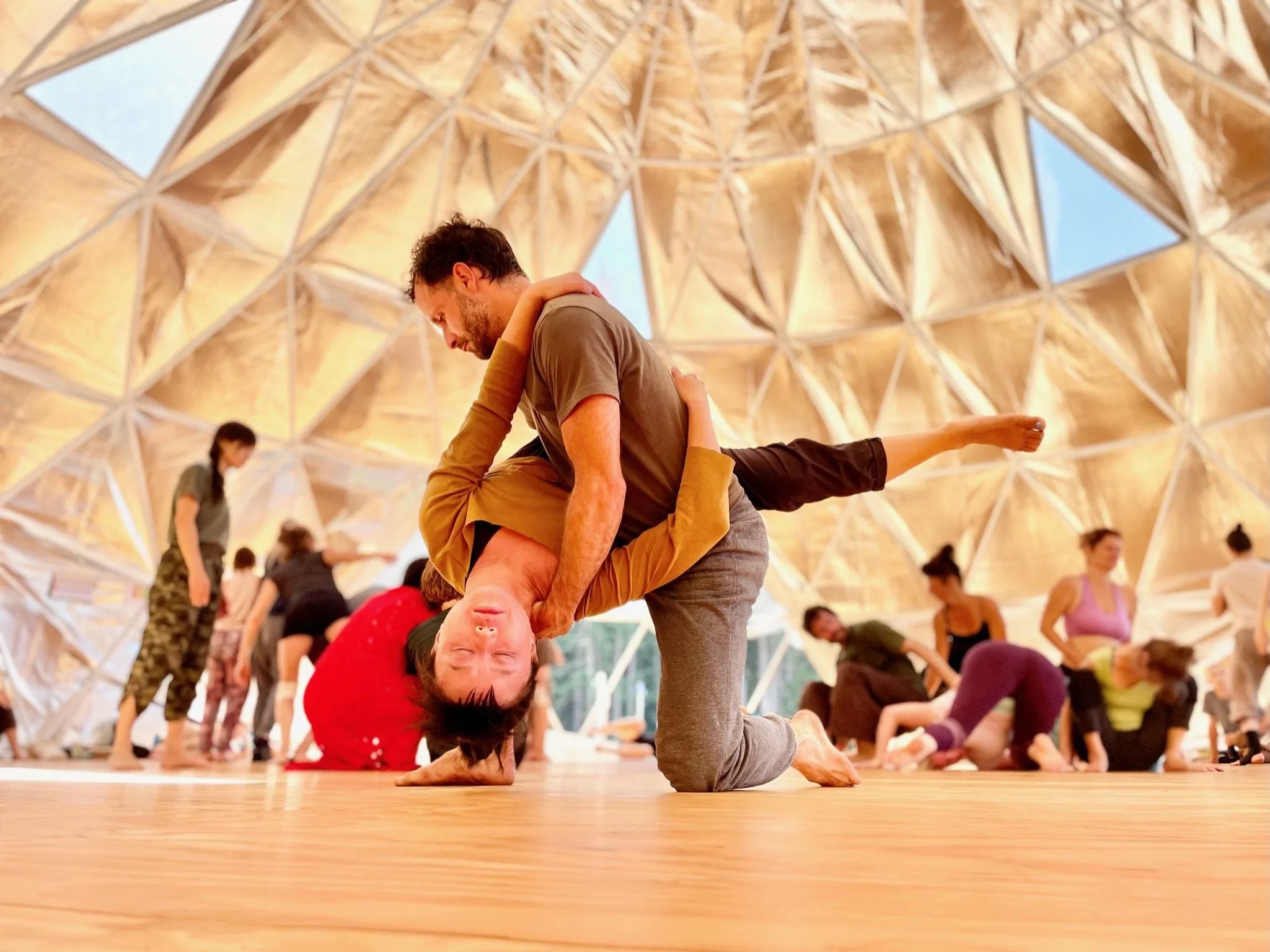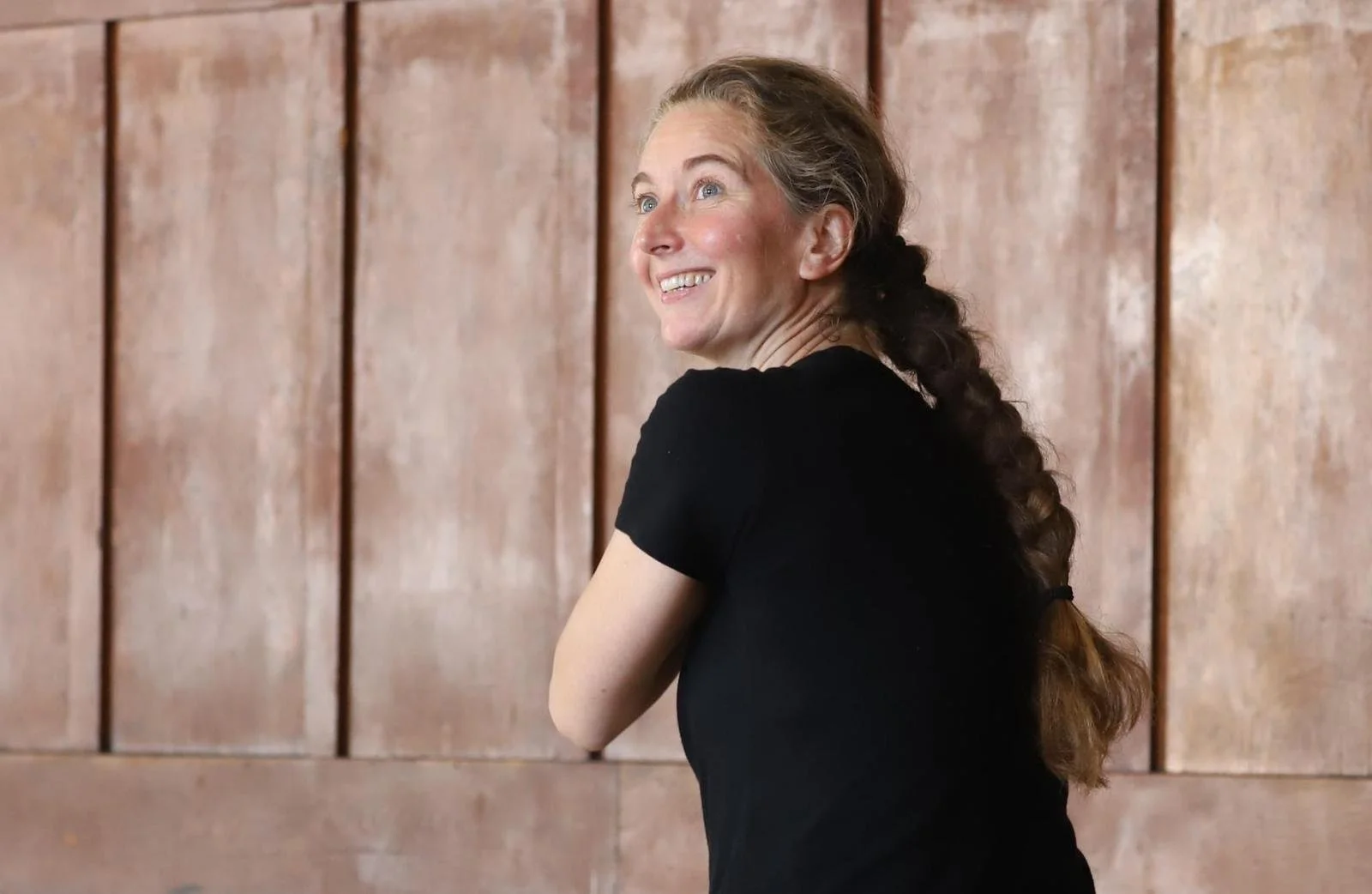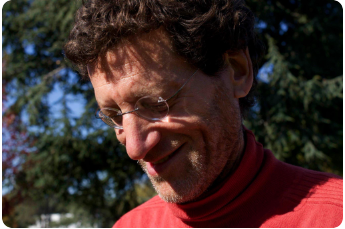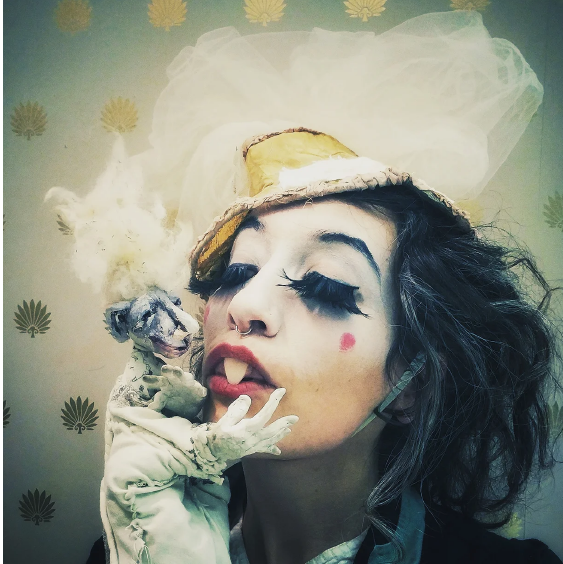Class Descriptions
-

Olivia Shaffer
Feedom in flight -Saturday 3 - 5 (Intermediate/advanced level)
In this class we will play with spherical space by exploring the buoyancy and ease through the air and softly back down to the ground. To support the loft, we familiarize ourselves with our ever shifting centers of gravity. We listen for the nuance in weight exchange, playing with modulating tone, pressure, counterbalance and counter tensions of support. As underdancers, we investigate the multitude of ways our bodies provide surface, offering structure and agility for our partners to willingly and harmoniously perch or hitch a ride.
Embodied Dimensions / An exploration into the felt experience of our dancing self- Sunday 6-7:30
This class will blend practices of dance improvisation, contact improvisation, and somatic movement approaches. The underlying curiosity of this class looks to tune our senses and attention in order to more fully map our inner experience of our physical self, uncover obscured perceptions, yield to our discoveries, and articulate the intricacies of expression.
-
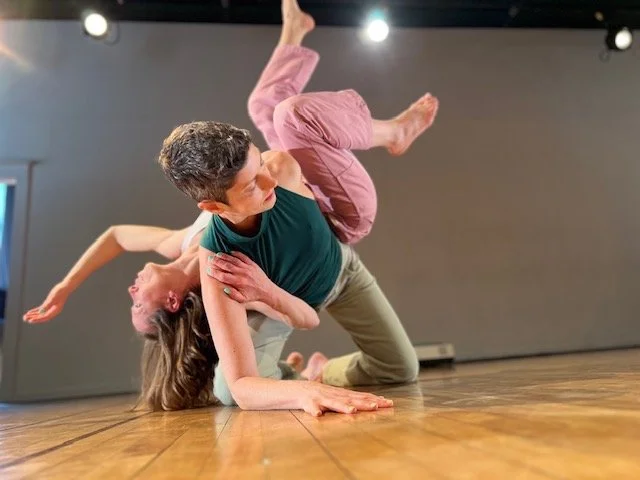
Delia Brett
“Subtle-ing down” for Lift Off -Friday 11:30 - 1:00
What makes a dance great? Listening. What are we listening to? The subtleties. The path to effortless flight in a CI dance is a subtle one. For flying to become as easy as walking, falling as simple as standing and floating up a shoulder as easy as floating down stream we need to be able to “subtle down”. “Subtle-ing down," we learn to tune into the nuances, the corners and crevices, the smaller pathways of connection, the timing of breath, the invitation and the opportunity. Jumping flying, lifting, catching, gliding, all the peak moments in a dance, they are not about doing more— they are about letting go of the minds grip and surrendering to the wave of grace that fills the subtle spaces in-between.
Experienced dancers only please.
The Dance of Everything -Saturday 1 - 2:30
Contact Improvisation is more than just a dance technique—it is a practice of deep listening, presence, and embodied connection. Beyond the mechanics of movement, something ineffable emerges: a shared presence, a dance that has never existed before and will never exist again. In this space, we don’t just move—we witness, attune, and create. Through guided exercises, solo exploration, and open dancing, we train our capacity to be with the unknown, to trust in the unfolding moment, and to expand our edges of play and permission. Whether lifting, supporting, or yielding, we cultivate a heightened attention that allows for grace, intimacy, and the full range of human expression. Stillness belongs, chaos belongs, you belong. The dance is both individual and collective—every part includes the whole, and the whole includes every part. Strangers become friends, who become giants, who’s shoulders form a cliff edge for tumbling over. A pebble washed smooth by the rushing sea, we slip into the pocket of gravity. Tossed into the whirling drift, we hover, as light as a whisper. In this landscape of sensation, weight, and momentum, everything become anything and everything becomes undone. We learn to hear movement as music, to experience the group as a song in motion, and ourselves as playing an essential part.
No prior experience is necessary—just a willingness to explore, to listen, and to meet yourself and others in motion.
-
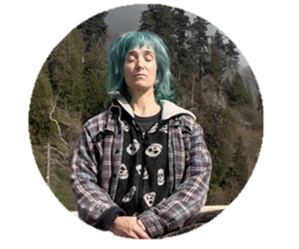
Joni Cooke
Be Seen and See, be Heard and Listen, Friday 10 - 12
This will be a class to strengthen the recognition of authentic impulse, both within our bodies and with our partner. We will develop and hone our listening skills by starting small and narrowing focus on our sensations. Then we’ll take these beautiful cultivated listening states outward and play with some mirroring games, tell our physical stories to each other, and have a nice long cypher to let the distinction between our solo dance and our connected dances really land in our body.
* What is it to clearly express our own self? and what is it to be moved and influenced by your partner, the floor, the light in the room?
* And can we hold our centre while being in relationship? Can we listen somatically and find clear self-expression at the same time? Or do we lose our solo plot and cave to the other?
Be Seen and See, Be Heard and Listen Sunday 1 - 2:45
This class will further the exploration started Friday about the notion of balancing self-expression with listening skills. It’s not psychotherapy but as a Somatic Embodiment Practitioner Joni’s fascinated with the ways Contact Improv can teach us in an physical/felt way about our tendencies in relationship. Put reductively: Do we talk too much without listening? Do we listen too much without talking? Can we really turn towards our partner’s invites without self-abandoning? Can we offer all the invites clearly without taking “no” personally. Let’s play with this question physically! Get some insights into our body — they bubble up — those insights.
* by moving through statue games, then the enlivened statue.
*listening to the floor with our body and
*listening to our partner at all kinds of different layers: listening to the bony body, the muscle and sinew body, and finally the skin body.
-

Selena La Brooy
Sunday 3 - 5:00
Impulse-Dance!
How do we witness ourselves inside and outside of the dance? How do we re-ignite our own curiosity of movement and presence when we start to hit that ‘wall of boredom’? How do we spark true engagement in a dance as opposed to re-living the same movement patterns, invitations and responses over and over?
Stealing from various somatic practices of mindful self witnessing, Authentic Movement and focused scores we will research how to notice impulse and choice and how these can ignite dynamism and creativity in the dance. We will explore ways to witness others for researching movement, for understanding our own impulses and what happens in the transitional moments in between.
Come as you are and embrace the mystery of what we will uncover together!
This class is for all levels of experience.
-
Helen Walkley
Sunday 10 - 12
Our process will integrate and mobilize the whole body and will include set movement material as well as exploring the physicality engendered in your own movement. We will focus on embodied presence and improvisational choice making in the moment via the support of the breath, the light release of the skeleton, the sinuous vitality of the musculature and the emotive nature of the organs.
The somatic processes of the Bartenieff Movement Fundamentals and the developmental movement patterns are the basis of the work.
Open to all levels.
-
Manuel Rochette
Class 1- Friday 11 :30 - 1 Beginner
"Tuning the body awake"
We got a few days of dancing in front of us so let's take a moment to arrive, meet, warm up and see what emerges when we show up with curiosity to engage with each other. We’ll say hello to the gravitational pull and rise into a playful levity. We’ll explore floor work, ethics, jam skills, and set a container so we can access a feeling of belonging and safety in this body, this space. We’ll focus on what’s important to attune our body to dance Contact Improvisation.
Class 2- Sunday 6 - 7:30
"The Waves And The Shore". Marrying the elementals of water and earth. Sand shifting, irregular tides yet an expectancy of meeting.
In this workshop we will be working with patience, centre to centre connection, subtle weight shifting, varying tone, and readiness to ambiguous invitations. -
Anne Cooper and Natalie Tin Yin Gan (顏婷妍)
Dancing the layers in the Basics: Friday 6 - 7:30
Natalie & Anne would like to offer you this all-levels contact improvisation class emphasizing approaches to lightness and support through warm-up, guided skills, and improvisation.
-
Stuart Phillips
Dive Deep- Friday 6 - 7:30, Saturday 1 - 2:30
These CI Dance classes sufficiently explore our potentially unexplored psycho-emotional aspects within specific interrelational movement.
We’ll dive deep into our internal landscape whilst relating, our unknown, unexpected, surprising aspects of physical & energetic relating, exploring how these experiences affect & change us, as we confront more uncomfortable, yet exciting & relieving mental/emotional truisms.
We’ll gently choose partners with highly intuitional guidance that potentially trigger our patterns, giving us ample chance to move through any stuck internal places with the help of exact experiential awareness.
This guided process is meant to enhance our personal evolution/development quickly & safely.
All levels welcome.
1st class concentrates on how we feel in relation to specific others in a safe protected space, whilst moving our stuff gently, so not a pain in the ass to feel. We practice this deeply & easily.
2nd class focuses on how we feel, but delves deeper into moving our stuff safely whilst "blaming" others for our predicament, taking more responsibility for moving where we are, so again, it's not a pain in the ass to relate/connect, rather, empowering
-
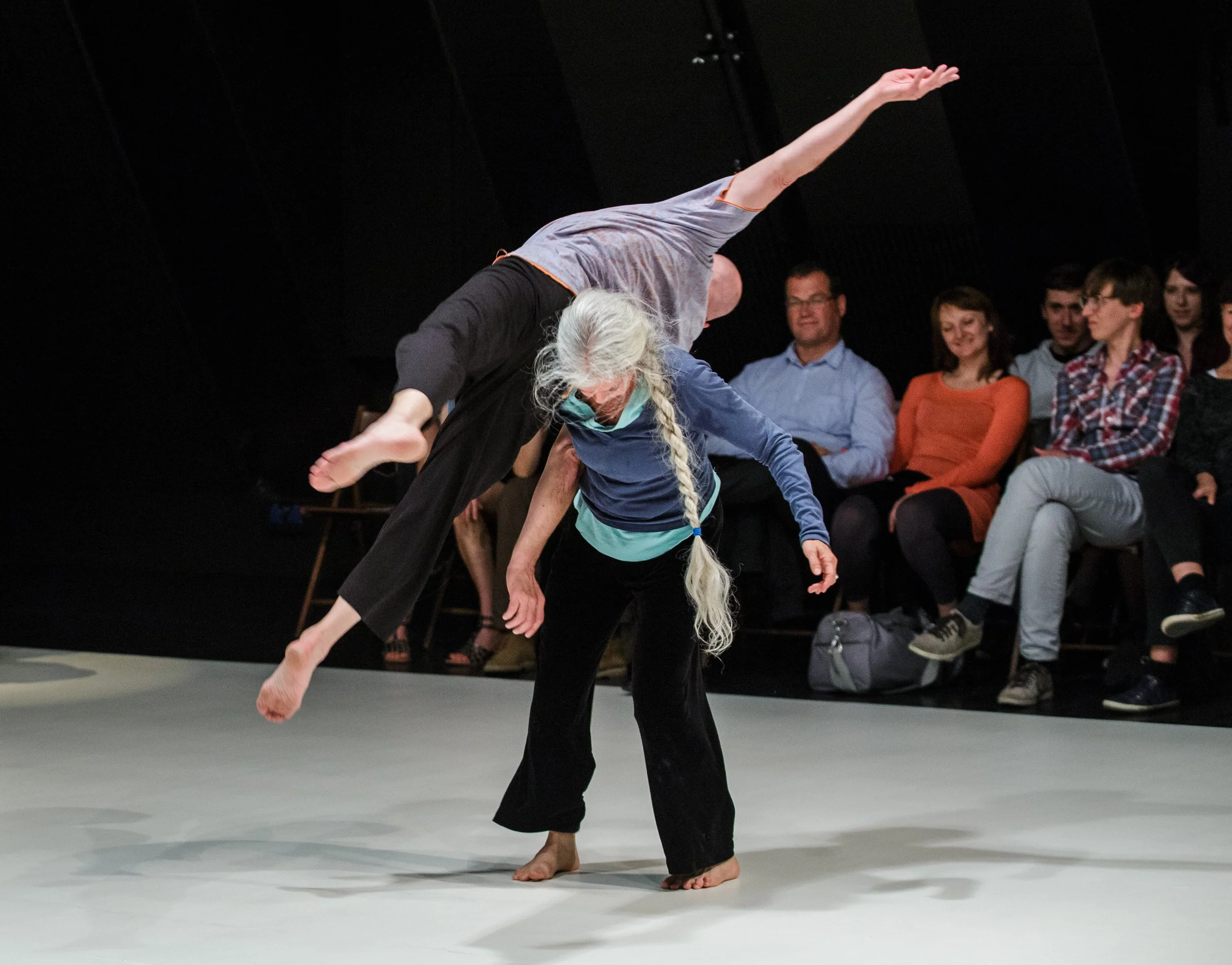
Andrew Harwood
Andrew Harwood 2-4:00 COMPOSITIONAL AWARENESS IN CONTACT IMPROVISATION
CI offers us a container for the practice of non-verbal communication, of expanded awareness, and for creative expression while allowing what is unexpected to emerge. As we ground ourselves in the core principles of CI, focusing on the dynamics and subtleties of touch, tone, texture, weight, momentum, and moving support, we will expand our awareness to include space, time, image, gesture and feeling, through solo, duet, trio and ensemble dancing. We will consider how a lightly held compositional awareness and feeling can support our efforts to connect and find meaning when we are dancing. This work can be viewed not only as a means for creative expression but as a process for developing our capacity to collaborate and build a community that holds space for each individual.
-

Farley Johansson
Sunday 1 - 2:45 This class will be designed to help people build their skills and understanding of contact principles so that they can give and receive weight with confidence and safety. The class will begin with simple movement patterning exercises that will allow us to transition in and out of the floor efficiently. Once we are warm, we will begin to access more complex and dynamic movements drills that will incorporate inversions that can bring us out of the floor to standing and vice versa, we will play with the concept of being able to fall upwards into our recoveries. We will then move into structured partnering exercises where we have the to opportunity to learn tools to find each other's centre, to utilize rolling and sliding point of contact to be able to offer or invite our partner's weight into and out of support. We will have a strong focus on developing skills that will require the consent of our partner for these lifts to succeed. We will build into more dynamic movements that will allow for greater use of space, levels and pacing.
-

Marie Osterman
It's my party and i'll CI if i want to: play & "pranks"
In this workshop, we'll tap into our inner rascal-- exploring different scores that invite a compassionate sort of mischief and generate an attitude of play within our dancing. Inviting a tone of rascalry into the dance creates opportunity to develop confidence, trust (in our impulses and in each other), agency, curiosity, and radical self-embodiment-- to allow ourselves to play with compassion & defiance, to take up space joyfully, is in itself a radical act.
In the course of two hours, we will explore different scores through partnering exercises and ensemble gameplay, drawing on inspiration from Konstantinos Mihos, Augusto Boal, and the Nancy Stark Smith quote: "being relaxed and alert with a sense of concentration and humor, is generally a useful stance."
-
Nayana Fielkov
This workshop is to expand and develop play and presence on stage and in everyday life.
Through a series of experiential awareness building games and exercises, we will cultivate curiosity, explore emotional range and practice the bravery of sharing our willingness and openness. Through following the body and our impulses, we can be in delight with the discovery of the moment.
What's so funny?? WE ARE!
Get ready to:
*Laugh A LOT
*Practice emotional range in order to widen possibilities of freedom with agency
*Practice simplicity to discover honesty and detail in what is funny
*Explore extension of impulse to become familiar with the edges of what is possible
*Work with tempo, rhythm, space, tensegrity, shape and form to gain agency in the body as a tool
*Discover by witnessing and practicing what generates laughter
Perfect for performers and non-performers, dancers, actors, musicians, storytellers, and anyone interested in building their personal presence and sensory awareness in performance and everyday life! Taught in English with Gibberish subtitles.
"If I were a fool, I'd know exactly what to do"
-

Francesca Frewer
Francesca Fewer Friday 2 - 3
In this class we will cultivate fine-tuned awareness and deep embodied sensitivity as means for becoming more agile and responsive within the emerging, unpredictable unknown. Using principles of The Feldenkrais Method to cultivate our abilities to sense detail and move with continual adaptability, we will expand our understading of how to effectively organize our structure in both weight-sharing and solo dancing. We will pursue having a wider array of possibilities available to us in any given moment, exploring how this gives us a greater ability to follow/respond to our partner’s invitations, and a greater ability to offer clear invitations to our partner. Francesca has a particular interest in cultivating a state of presence and embodied readiness that is so resposive that we can feelas though we are simply observing the dance unfold as we dance it, evenwhile we simultaneously engage continual choice-making.
-
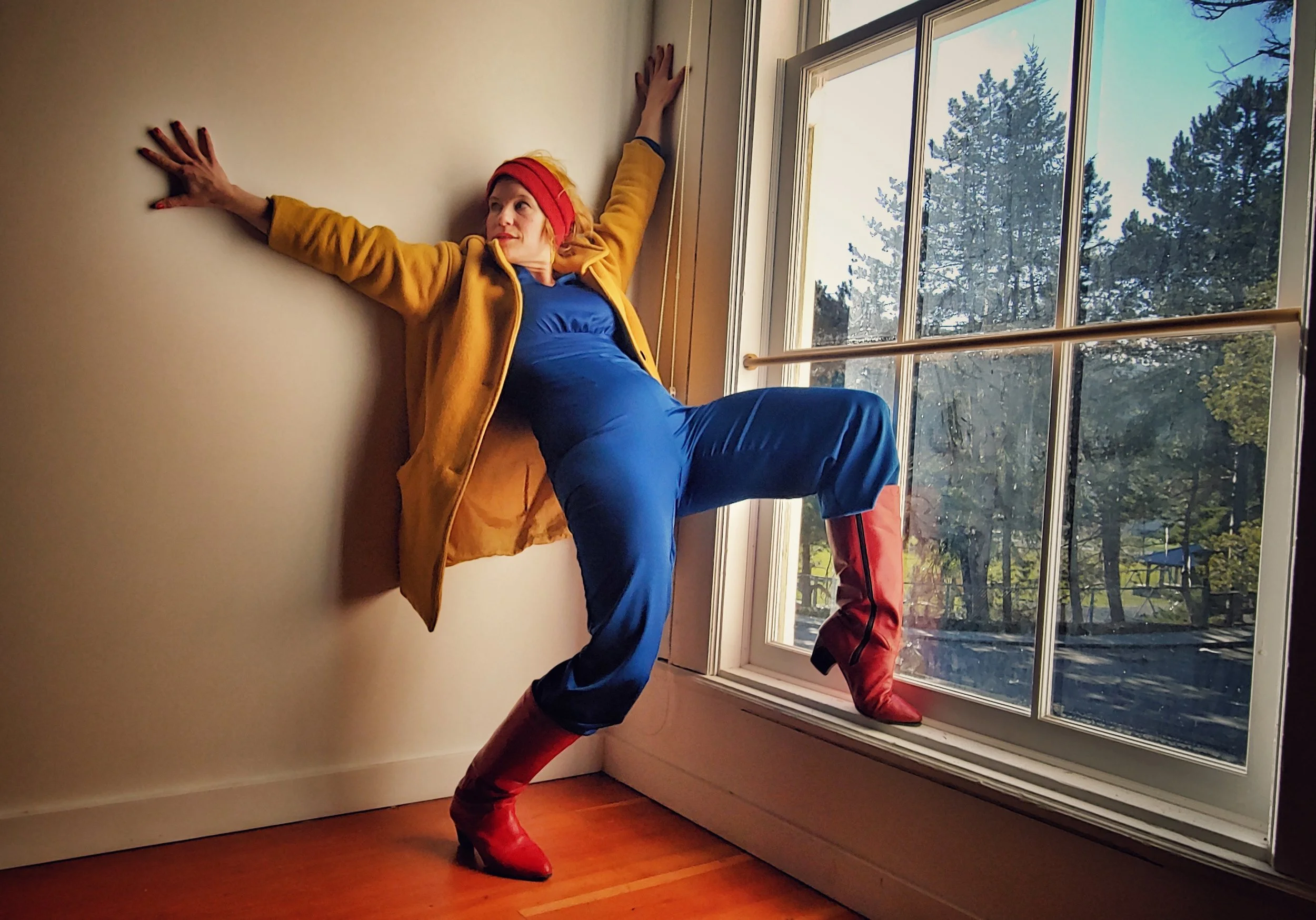
Kat Single-Dain
“Slow Dance Speed Date” 1 - 2:30
To clarify, this event is not actually about dating but it is about meeting, connecting and dancing with as many people as possible in a short time. Hosted by Gloria, who is self described as “world famous in parts of East Vancouver” and featuring special guest lounge singer and furniture re-salesman Bobby Johnsy. That’s right; each dance moment will be accompanied by live music —- deeply felt crooner music to be specific. You can find Gloria and Bobby entertaining the masses at festivals across BC and at the local Dusty Flowerpot Cabaret, where they host “Slow Dance Speed Dating” monthly. Gloria’s manager Kat Single-Dain is the artistic executive director of the Dusty Flowerpot Cabaret and hosts many other workshops and events at the space as well!
-
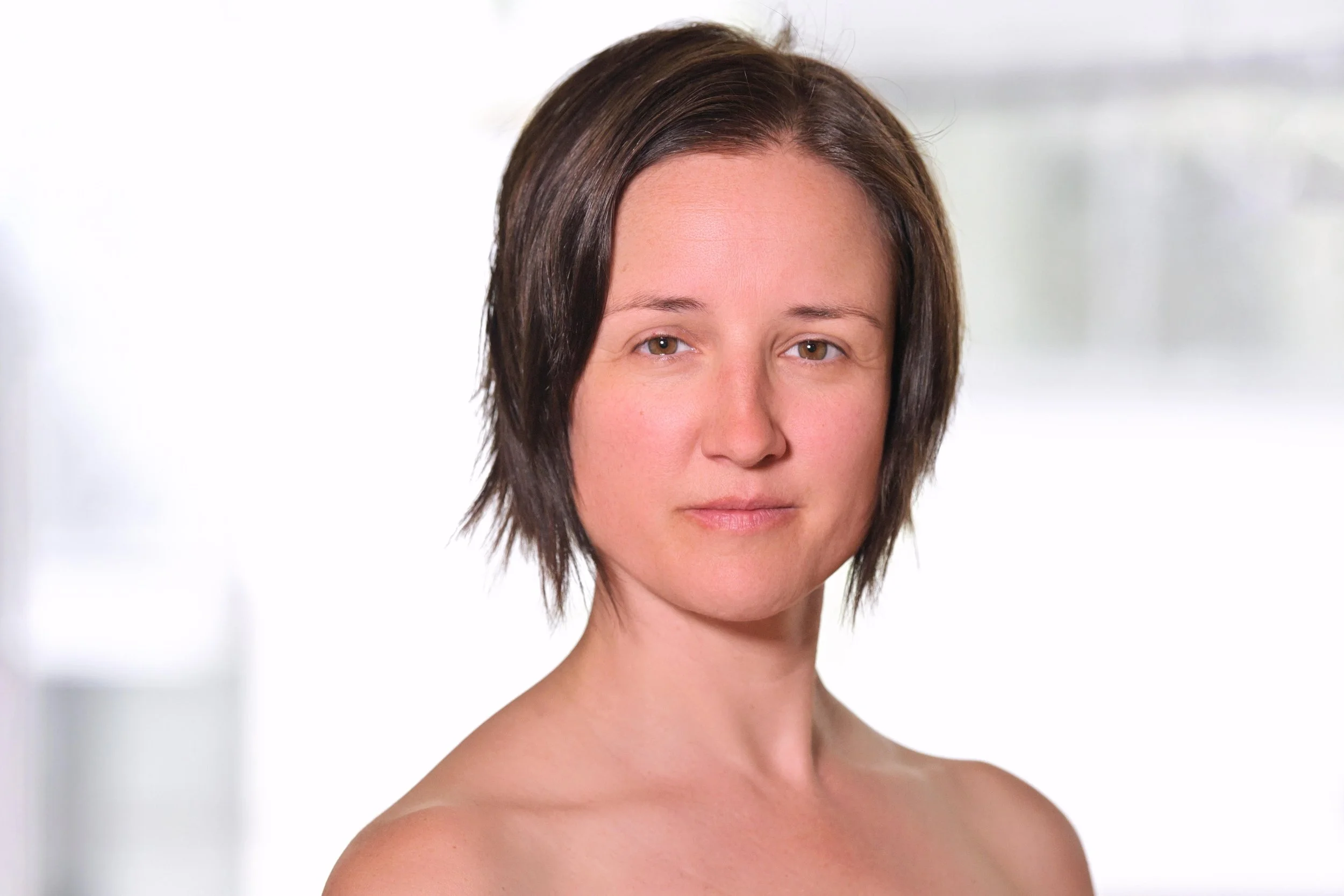
Jen McLeish-Lewis
Deep Listening — All Levels Contact Improvisation Skills. Sunday 10 - 12
We will start on the floor with a gentle somatic-based warm up that will help the body to feel gravity. Growing from the floor to standing, we will practice smoothing out our transitions into upright dancing. The goal is an aware, alert, and embodied presence that uses the full capacity of the mover as a human being awake in the world. More sensitivity is reached through relaxing the nervous system. More alertness is reached through waking up the mind with moment-by-moment choice making. More embodiment is reached through a deep listening to the relationship to the earth, each other, and the space around us.
-

Jen Metta Smith
Let’s Get Consensual; Contact Improv Edition
To what extent are you having the dance you want to have? Or the dance you think your partner(s) want to have? Inspired by the Wheel of Consent, this experiential workshop will explore factors that support or inhibit us in fully expressing our desires and limits in contact improv, including power dynamics.
-
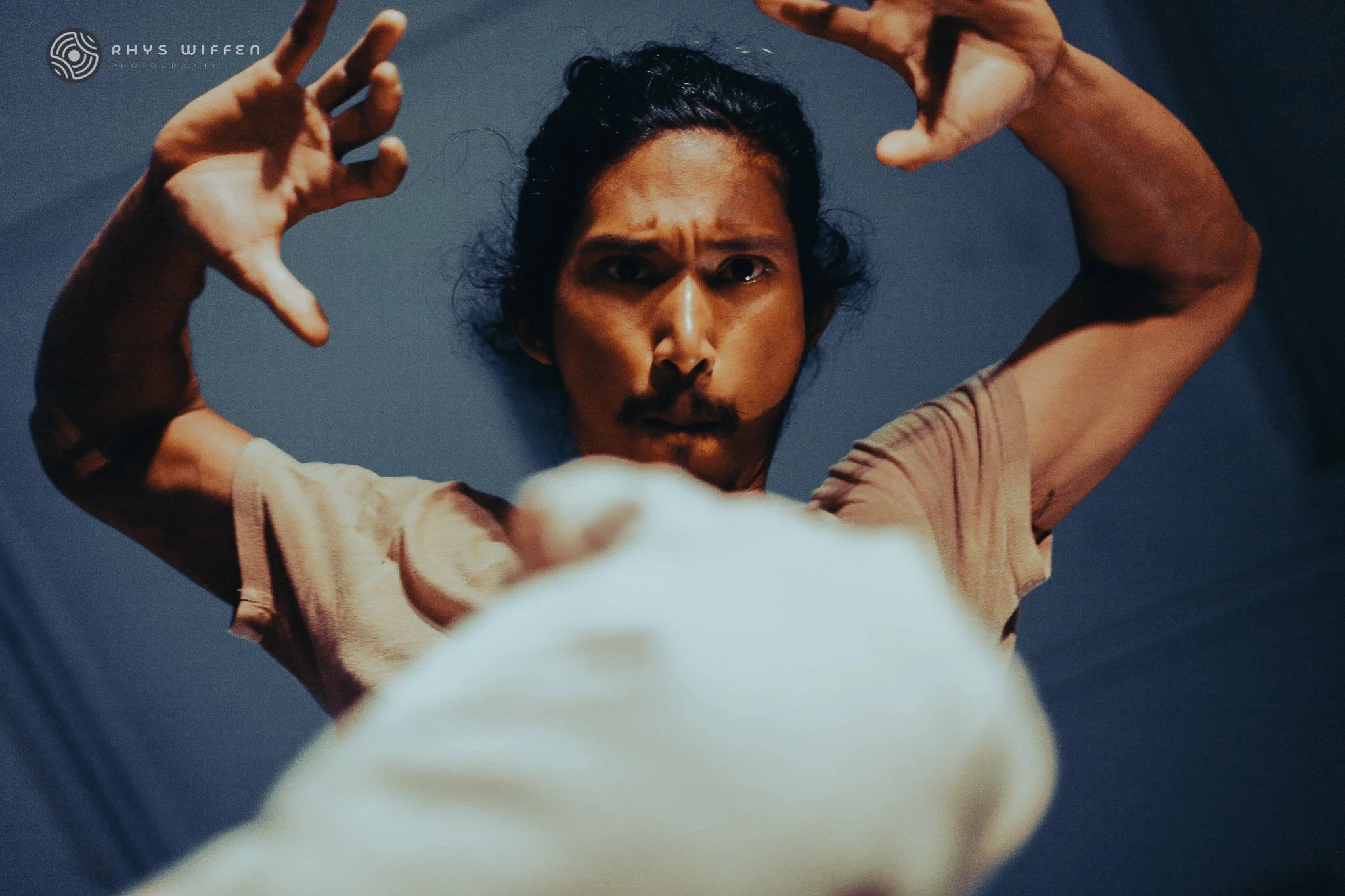
Hamzah Mas
Lab in Frame - Sunday 2 - 4:00
How do we remain embodied in our dance whilst being witnessed? How can we then extend this concept to dancing within frame to eventuate into exploration with videography.
I seek to explore the use of videography in the setting of Contact Improvisation. Together we dive into how the videographer dances with the dancers and vice versa as a duet up to an ensemble. How could we capture fantastical improvised moments through the frame lens and remain part of the dance? Let’s find out! -
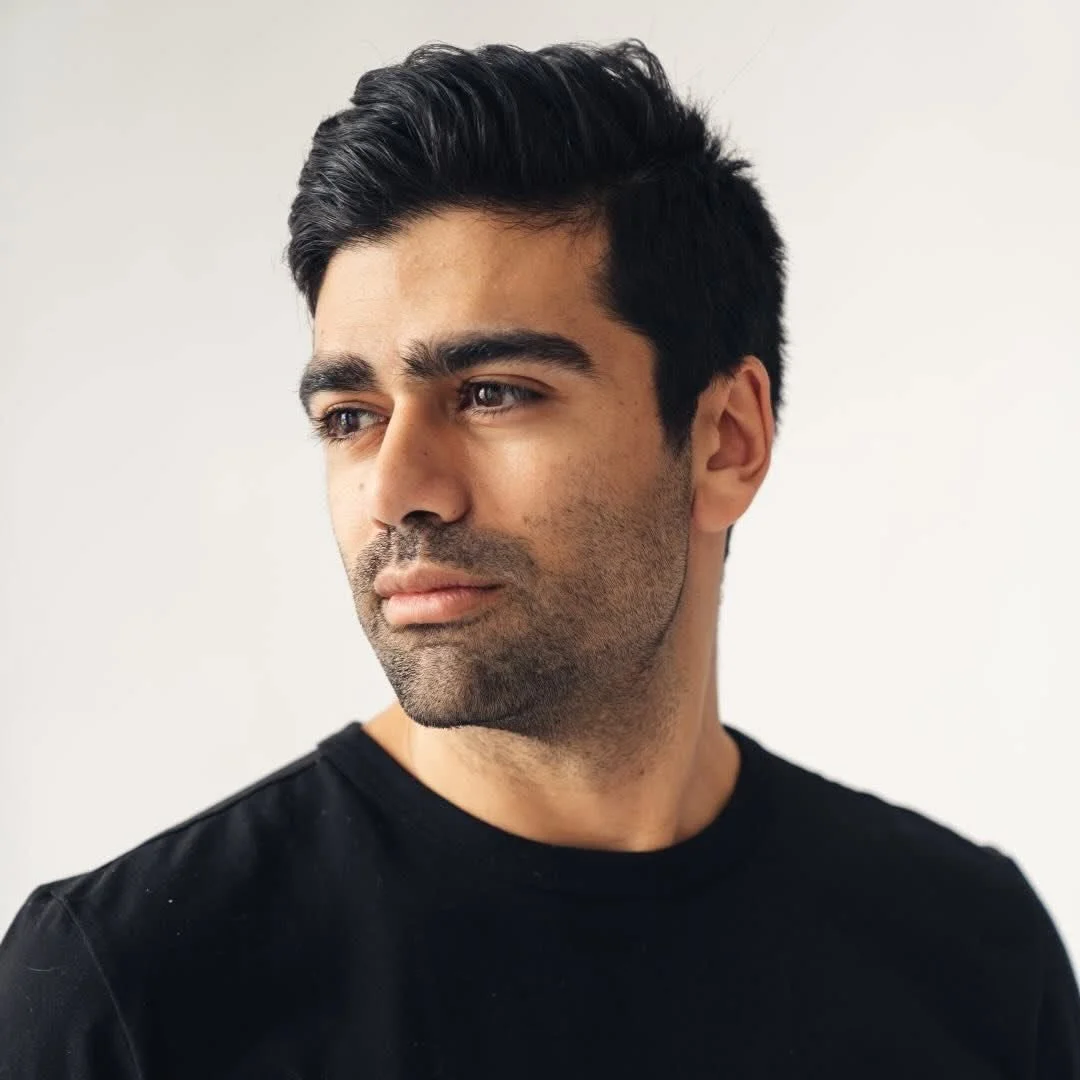
Alireza Jambor
Jam Facilitation - Friday 11:30 - 1
-

Julia Goudkova
Embodiment Lab - Saturday 3 - 5
